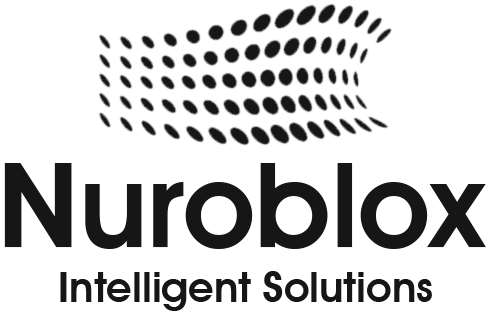Best Practices for Implementing AI in Business Workflows
Artificial intelligence is reshaping how businesses operate, but successful implementation requires more than just adopting the latest technology. Organizations that strategically integrate AI into their workflows experience dramatic improvements in efficiency, accuracy, and decision-making capabilities. This guide reveals the proven best practices for implementing AI in business workflows that leading companies use to drive measurable results.
The challenge isn’t whether to implement AI, it’s how to do it effectively. Companies that rush into AI adoption without a clear strategy often waste resources and fail to achieve their goals. By following structured best practices, businesses can minimize risks, accelerate time-to-value, and create sustainable AI-powered operations that genuinely transform how work gets done.
Understanding Your Current Workflow Landscape
Before implementing any AI solution, you must thoroughly understand your existing business processes. Conduct a detailed audit of your current workflows to identify bottlenecks, manual tasks, and inefficiencies. This involves mapping out each step in your processes, measuring cycle times, identifying error rates, and documenting resource allocation.
This foundational step is critical because it helps you identify which processes will deliver the highest ROI when enhanced with AI. Look for workflows involving large volumes of data, repetitive manual tasks, decision-making patterns, or quality control checks. These are typically the best candidates for AI integration.
Document your findings in a comprehensive process inventory that includes process owners, complexity levels, current pain points, and estimated time investments. This documentation becomes your roadmap for prioritizing AI implementation efforts.
Defining Clear Objectives and Key Performance Indicators
Successful AI implementation strategy requires crystal-clear objectives before you begin. Define what success looks like for your organization by setting specific, measurable key performance indicators (KPIs) tied to business outcomes.
Rather than implementing AI for its own sake, connect your AI initiatives to concrete business goals. Are you trying to reduce processing time by 60%? Decrease error rates from 5% to 1%? Improve customer response time from 48 hours to 2 hours? Increase employee productivity by 40%? Each objective should have corresponding metrics that you’ll track throughout the implementation process.
Establish baseline measurements from your current operations. These benchmarks allow you to measure the actual impact of your AI implementation and demonstrate ROI to stakeholders. Create a dashboard that monitors these KPIs in real-time, enabling data-driven decision-making as you optimize your AI workflows.
Building a Cross-Functional Implementation Team
AI implementation doesn’t happen in silos. Assemble a dedicated team that includes representatives from technology, operations, compliance, and the business units where AI will be deployed. This cross-functional approach ensures your implementation addresses technical feasibility, operational requirements, regulatory compliance, and user adoption challenges.
Your team should include data engineers, business process experts, IT security specialists, and domain experts who deeply understand the workflows being transformed. When possible, include frontline employees who work within these processes daily, they provide invaluable insights into practical challenges and optimization opportunities.
Establish clear roles and responsibilities, communication protocols, and decision-making authority within your team. Regular sync meetings and transparent communication prevent silos and ensure everyone is aligned on implementation progress and challenges.
Prioritizing High-Impact Use Cases
Not all workflows are created equal when it comes to AI readiness. Start with high-impact use cases that offer clear value, manageable complexity, and readily available data. This focused approach builds momentum, demonstrates ROI quickly, and creates organizational confidence in AI initiatives.
Evaluate potential use cases using a prioritization matrix that considers factors like implementation effort, expected ROI, data availability, technical feasibility, and alignment with strategic goals. Common high-impact opportunities include customer service automation, invoice processing, document classification, predictive maintenance, and sales forecasting.
Begin with pilot projects on 1-3 high-potential use cases rather than attempting enterprise-wide AI deployment. Successful pilots generate proof-of-concept results, build internal expertise, and establish best practices you can scale across other processes.
Ensuring Data Quality and Governance
AI systems are only as good as the data fueling them. Invest in data quality initiatives that ensure your training datasets are accurate, complete, representative, and free from biases. Poor data quality is the primary reason many AI implementations fail to deliver expected results.
Establish comprehensive data governance frameworks that define data ownership, access controls, quality standards, and documentation requirements. This governance structure ensures your organization maintains clean, reliable data that supports both current and future AI initiatives.
Implement data validation processes, establish clear data lineage, and create redundancy mechanisms to ensure data reliability. Address data privacy and security concerns proactively, especially when dealing with sensitive customer or employee information. Compliance with regulations like GDPR, CCPA, and industry-specific requirements is non-negotiable.
Selecting the Right AI Tools and Platforms
The AI technology landscape is crowded with solutions ranging from pre-built platforms to custom implementations. Choose tools and platforms that align with your specific workflows, organizational capabilities, and technical infrastructure. Consider factors like ease of implementation, scalability, integration capabilities, vendor support, and total cost of ownership.
Evaluate whether to use industry-specific solutions tailored to your vertical, enterprise platforms offering broad capabilities, or specialized tools for specific use cases. Many organizations benefit from a hybrid approach combining commercial platforms with some custom development for unique requirements.
Assess your internal technical capabilities honestly. If you lack AI expertise internally, platforms with no-code or low-code interfaces may accelerate implementation. If you have strong data science teams, platforms offering deeper customization might provide more flexibility. Prioritize solutions that integrate seamlessly with your existing technology stack to minimize disruption.
Addressing Change Management and User Adoption
Technology implementation success depends fundamentally on people accepting and effectively using new AI-powered workflows. Prioritize change management by communicating benefits clearly, providing comprehensive training, and addressing employee concerns about automation and job displacement.
Create compelling narratives about how AI will enhance rather than replace human capabilities. Focus messaging on how AI eliminates tedious manual tasks, reduces errors, and enables employees to focus on higher-value strategic work. Involve employees early in the implementation process, their feedback shapes better solutions and builds buy-in.
Develop comprehensive training programs tailored to different user groups. Some employees need deep technical understanding, while others need basic operational proficiency. Provide ongoing support through documentation, video tutorials, and accessible help resources. Celebrate early wins and recognize teams who successfully adopt new AI-powered workflows.

AI systems handling business-critical processes require enterprise-grade security protections. Establish security frameworks that include access controls, encryption, audit trails, and threat detection mechanisms specifically designed for AI systems.
Conduct thorough security assessments before deploying AI into production environments. Identify potential vulnerabilities in your AI models, data storage, and integration points. Implement continuous monitoring that detects anomalies, unauthorized access attempts, and performance degradation.
Address compliance requirements proactively, particularly if your workflows involve customer data, financial information, or regulated industries like healthcare or finance. Document your AI decision-making processes to enable transparency and auditability, critical requirements for regulated sectors. Establish protocols for explaining AI decisions to stakeholders and addressing concerns about algorithmic bias.
Monitoring, Measuring and Continuously Optimizing
Implementation is just the beginning. Continuous optimization of AI workflows drives long-term value and ensures your systems adapt to changing business conditions. Establish monitoring dashboards that track your predefined KPIs and alert you to performance degradation.
Implement feedback loops that capture user insights about AI system performance. When humans interact with AI outputs, collect data about whether those outputs were accurate, helpful, and appropriate. Use this feedback to retrain and improve your models over time.
Schedule regular reviews like weekly for early-stage pilots, monthly for established systems to assess performance against targets. Be prepared to adjust models, refine processes, and shift resources based on performance data. The most successful organizations treat AI implementation as an ongoing evolution rather than a one-time project.
Scaling AI Across Your Organization
After proving success with pilot projects, scaling becomes the next challenge. Develop a scaling roadmap that systematically expands AI across workflows, business units, and use cases while maintaining quality and consistency.
Document everything from your successful pilots as technical configurations, process changes, training materials, and lessons learned. Standardize your approach so subsequent implementations proceed faster and more efficiently. Build internal expertise through dedicated AI centers of excellence that develop playbooks and best practices for your organization
Consider creating AI enablement platforms or services that make it easier for business units to access AI capabilities without requiring deep technical expertise. This democratization of AI accelerates adoption and drives innovation throughout your organization.



